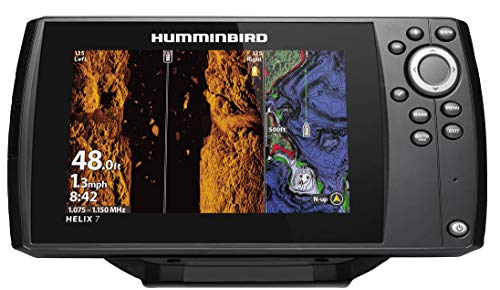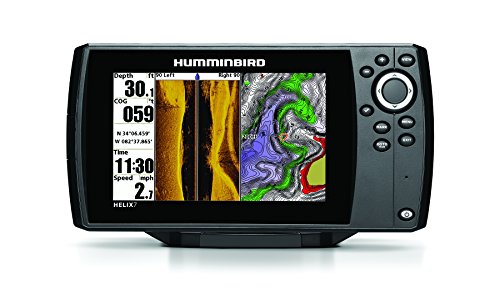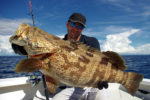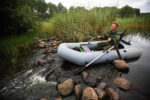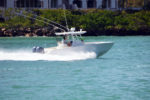Humminbird Helix 7 Review

Quick Overview
FEATURES
QUALITY
PRICE
Pros
Cons
Fill your fishing adventures with exciting locations, big catches, and easy-to-use tools.
That includes the latest fish finding technology, as you’ll see in today’s Humminbird Helix 7 review.
From anglers who are new to fish finders to those used to the technology, the Humminbird Helix 7 works wonders.
You can easily locate your next hot spot, find structures to cast around, and more.
Upgrade your fishing skills by learning more about what’s under the water with the latest in sonar technology.
Humminbird Helix 7 Review
The Helix series from Humminbird focuses on incorporating the latest fishfinding technology into accessible devices for anglers.
Units like the Humminbird Helix 7 make finding fish and then catching it easy, just as a fish finder should. Part of the appeal of this line is the wide range of models available.
Humminbird took the time to create various models in this line that incorporates CHIRP sonar, down imaging, side imaging, and more.
No matter how you plan to spend your time on the water, Helix makes it possible to improve your experience!
That said, we’ll focus on a particular model from this Humminbird series or line: the Helix 7 G3 NAV.
Who Is The Helix 7 G3 NAV For?
What type of angler can most appreciate the features offered in the Helix 7?
Experience level is not an issue when it comes to this advice. The views, functionality, and features fit those fishing for one year and those who have fished for decades.
The Helix 7 is also an excellent choice for anglers who need a reliable and straightforward menu system to control.
Pre-loaded views that are practical make this a user-friendly device to use, no matter what your experience level with fish finders is.
Convenience is a high focus with the Helix 7, but that doesn’t mean passionate, experienced anglers won’t like it.
In fact, enthusiasts appreciate the balance of advanced data with accessible views.
Altogether, the Helix 7 is great for many different situations. However, those who need a larger screen may want to look at one of the larger-sized models of the Helix or other Humminbird models instead.
Seven inches diagonally is a good size, but larger screens are necessary for some anglers.
What’s Included?
What's inside the box for each Helix 7 model varies and the Humminbird Helix 7 G3 NAV includes the following:
- Helix 7 MSI module
- Transducer
- Mounting hardware
- Power cable
- Screws
- Gimbal mounting bracket
- Instructions
Overview of Features
Humminbird made sure the Helix 7 line was well-fitted with the latest features from fish finder technology.
What features can you find in the Helix 7 G3 NAV, and how will those features help you fish better? Let’s get into the details now.
- MEGA Side Imaging (MSI)
Helix 7 models that feature MSI, such as the G3 NAV, offer what is known as Mega Side Imaging or the ability to see a lot of what’s beside the boat.
With ranges that go as high as 125ft. on both sides of the boat, the views impress anglers everywhere.
You can adjust this side-scanning cone to scan a smaller area if you prefer, but the ability to go to 125 feet is fantastic.
Humminbird advertises this imaging as three times more robust than standard side imaging, and the results turned up to be at par with that claim.
- MEGA Down Imaging
It’s not just side imaging that is impressive with the Helix 7 G3 NAV; the down imaging stands out as well.
The MEGA Down Imaging can create precise representations of what’s happening up to 125 feet under the boat.
Like the MSI, you can see up to three times more detail than what can be found from standard down imaging when using MDI.
Combining views from MSI and MDI allows you to make informed choices about where to cast your fishing line out.
- Map Coverage and GPS Mapping
Helix includes a pre-loaded SD card with Navionics+ maps on it. This map set covers more than 20,000 bodies of water in the United States and Canada, and you can further upgrade it as needed.
Additionally, it still includes the standard Humminbird Basemap. This base set of maps includes contours, depths, danger areas, and more for anglers to see when heading out.
The combination of these two systems gives a variety of map options for you to choose from.
Finally, you can also do high-quality GPS mapping of trails, waypoints, and more when you use the Helix 7.
The GPS mapping software saves data for later so you can create unique trips to your favorite spots.
- DualSpectrum CHIRP Sonar
Fish finders at this price point typically use CHIRP sonar to find fish, structures, and the bottom when scanning.
The Helix 7 G3 NAV uses CHIRP sonar, but the beams scanning are DualSpectrum CHIRP sonar beams. In other words, two beams are scanning.
These two beams work together to create higher accuracy images and data than can be found with a single beam.
- High Memory, Fast Processing
When your fish finder takes in a lot of data from the transducer, screen refresh issues often occur.
GPS mapping features also slow down and sometimes completely short out due to memory issues.
The Helix 7 avoids this issue by providing more memory than is usually seen in this type of fish finder.
The maps keep up with what is happening in real-time without hiccups or delays.
Lag time can be a big issue when fishing with fish finders, so it’s good that the Helix 7 subverts this issue better than previous models.
Consistency between what is seen on screen and what’s in the water is essential for anglers. The Helix 7 G3 NAV provides that.
Understanding Sonar Options for Fish Finders
When shopping for different fish finders, one thing often discussed is sonar technology.
Sonar’s a big part of how fish finders locate and show the locations of everything underwater, and there are different types of sonar.
From simple, affordable sonar to more advanced, new-to-consumer sonar, there are many options to choose from today.
It can be confusing to see all of the sonar options discussed in different fish finders, which is especially true if you don’t know what some terminology means.
Breaking down the different sonar and imaging options helps you make a more informed fish finder selection.
- Standard Sonar
The original, basic sonar seen on many fishing devices is simple 2D sonar. In this type of sonar, the sonar reads a cone-shaped area and displays the area’s findings.
When this sonar was first used for fishing devices, the results would often be printed out and read later.
Alternatively, there would be a simple screen to read back the sonar reflections of fish locations.
As HD screens became affordable in the consumer industry, the readings are now shown on high-quality screens on most devices.
The screen is usually set on a left-to-right scroll to show new readings as they come in.
Every fish finder uses traditional sonar at some level, but most have more advanced versions on the devices seen today.
- CHIRP Sonar
CHIRP transducers take traditional sonar to another level. Basic sonar has a specific frequency for readings or to show what’s under the water.
CHIRP sonar, on the other hand, takes readings over a range of frequencies. For example, the readings might be taken from 65 kHz up to 115 kHz.
By putting more energy into the world, CHIRP sonar readings see more detail than traditional sonar to allow anglers to get more detailed information from their fish finders.
For that reason, CHIRP sonar is all-but-standard in popular fish finders found on the market today.
Some models will send out multiple beams to do CHIRP scanning to give even more high-resolution readings.
You can typically adjust the range of frequencies scanned to control the sensitivity of the readings gathered.
- Additional Imaging: Down and Side Scanning
There are two types of imaging sonar often seen on fish finders: side imaging and down imaging.
Down imaging scans straight down, and side imaging scans out to the sides with a narrow beam.
This type of imaging gathers data from this beam to show fish and structures below and beside the boat.
Many popular fish finders have one or both of these types of imaging.
Customizing your screen to show imaging alongside CHIRP sonar readings gives you two looks at what’s happening.
As you get more comfortable interpreting these two sets of data, your angling will also improve.
Down imaging is great for focused detail under the boat but can be tough to use in very shallow waters due to reflection.
Side imaging covers a lot of areas without needing to go directly over them but isn’t as powerful in deep water since it projects at an angle.
If you aren’t sure which type of imaging suits your needs best, don’t be afraid to look for a fish finder with both.
- Full-Circle Imaging
Less commonly seen on fish finders is 360-degree sonar. This type of sonar uses the same narrow beam-type as side-scanning, but the beam rotates around for a complete circle view.
Some of these devices scan the area directly in front of the boat, while others focus directly underneath the boat.
The result is a full view of what is around the area being scanned, and it can be very helpful for fishing.
However, not many consumer-friendly fish finders prioritize this type of sonar imaging at this time.
It will take time to see if this type of 360-degree view fits fish finders for a complete look or if it will be redundant with other sonar technology.
- Active or Live Sonar
Lately, many new lines of fish finders have a particular type of sonar to show fish movement.
Live or active sonar is a type of sonar that scans out in front of the boat to visualize the actual motions of fish.
This can be useful when you want to see how fish respond to what you are doing or observe their patterns.
Whether or not this type of sonar will become standard in the industry is yet to be seen, but it is certainly interesting.
Anglers who want to get a more specialized view may want to look for this type of sonar on their next fish finder module.
Alternatives
Fish finders come in an incredible number of variations, and that can make it hard to choose.
Thus, you don’t need to settle for one that doesn’t fit your angling style.
For this Humminbird Helix 7 review to be comprehensive and objective, we looked at alternatives that you can consider.
Humminbird 409850-1 Helix 7 SI
Other Helix 7 models, such as SI, provides SwitchFire Sonar control to anglers, which is a bit of an upgrade from what the G3 NAV offers
This control allows you to switch between multiple views of the CHIRP sonar data shown by the module.
Add or remove detail to get a better look at bait presentation, turbulence, structure location, fish movement, and more.
The choice is yours, and that creates customizability with the fish finder that many anglers seek.
Larger models from Humminbird include the Helix 9 as well as the Helix 10.
From Other Brands
The Lowrance HOOK Reveal 5x combines the best of DownScan imaging, CHIRP sonar, and Lowrance’s FishReveal technology to see more.
The Garmin Striker Vivid 5cv is a compact fish finder great for kayak angling that utilizes CHIRP sonar and GPS tracking for data reads.
Upgrade Your Adventures Now!
There’s no doubt that the Humminbird Helix 7 is an impressive fish finder.
A large screen, high-quality imaging, and reliable feedback give you the advantage when out on the water.
New waters are no longer a challenge as you can load in the base maps and get fishing ASAP with the tools in the Helix 7 G3 NAV.
The variety of features available in specific models from Humminbird also make a big difference.
Whether you want as many sonar layers as possible or are happy with a more straightforward build, there’s a great chance the Helix 7 model fits your needs.

